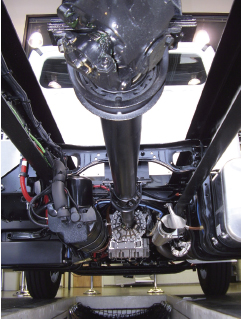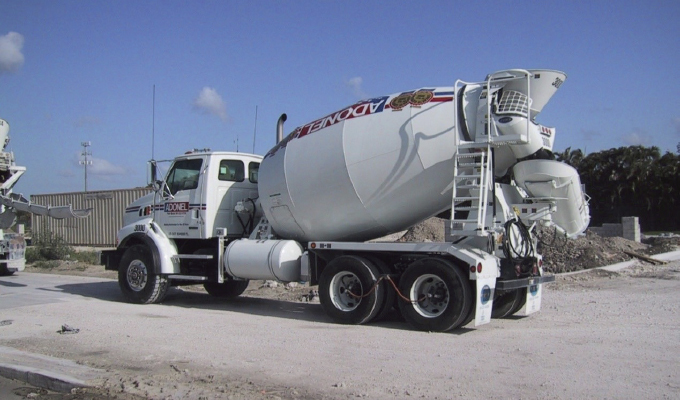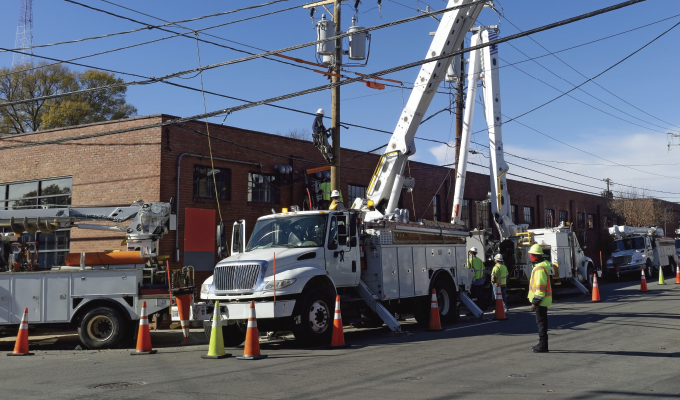The first workable commercial truck was built by Gottlieb Daimler in Germany in 1896. In North America, the first semi-truck was built by Alexander Winton in Cleveland, Ohio, in 1898. The first commercial vocational truck was sold by Autocar in 1899. It was a parcel delivery vehicle with a 700-lb payload and the option between a 5- or 8-hp engine.

But how things have changed! In 2022, some 309,615 Class 8 trucks and 229,821 Class 5-7 trucks were produced. Trucking has become the central pivot around which the American commercial system moves. The truck has become fundamental to economic progress.
While truck engineers made strides from materials to electronics over the years, certain things have not changed. I call these the “Truck Fundamentals.” These are the principles that govern vehicle performance, how wheels receive power and torque, and how various auxiliary devices receive power. To create an efficient and productive transport organization, everyone involved should understand how these principles are managed.
First, the salesperson should have a firm grip on these fundamental principles and articulate them to the customer. The ability to explain these in a forthright and simple manner instills both confidence in the dealership and the product. The buyer should also understand these principles so the product purchased conforms to the operation’s specifications and needs. Next, the fleet manager must have a strong understanding of the operation the truck is meant to fulfill and how these needs should be met. Often, the fleet manager writes the specification where the fundamentals are articulated. Lastly, the driver or operator should understand the fundamental aspects of the vehicle so they operate the vehicle at peak performance. Understanding the vehicle basics and its equipment also helps the driver or operator describe any failure modes observed during vehicle operation.
So, what are these fundamental principles?
UNDERSTAND THE JOB
The very first principle is possibly so simple that it often eludes us. It is to fully understand and be able to articulate the operation of the truck. What weights will the truck carry over what topography? Is the work always on-highway, which then leads to the question of what road surface will be traversed? What kind of cruise speed will the truck operate? Does it require exportable hydraulic, mechanical, or electrical power to various systems on the vehicle? And does this power need to be available only when the vehicle is stationary or when it is also moving?

POWER & TORQUE
Next, it’s important to understand power and torque and how they are channeled to the wheels. Torque is measured on a dynamometer, and power is calculated using the formula Power = (Torque x Engine RPM) / 5,252.
The power produced in the cylinders is called Gross Power, and what “arrives” at the transmission is Net Power. Net Power is less than Gross Power due to accessories and internal losses. Finally, the power that arrives at the wheels is called Wheel Power. Note that Wheel Power is quite less than Gross Power because of efficiency losses along the way.
Torque, however, is proportional to speed: The slower a shaft is made to turn at constant power through various gears, the higher the torque. This means that the torque at the wheel can be as high as 40 to 50 times net engine torque in first gear depending on transmission and axle ratios slowing down the wheel.
Think of torque as the twisting force generated on the crankshaft of the engine and then transmitted down through the driveline to the wheels. Power is proportional to rotational speed multiplied by torque. If there is no rotation of the crankshaft of the engine, there is no power produced.
However, there is an engine speed defined by the speed and load on the engine known as the engine sweet spot. This point of high power is the most efficient engine speed to operate, and it is where you want to cruise.
So, how much performance is needed? Ideally you should be able to attain your desired cruise speed on a 0.75% to 1.25% grade in the top gear.
Knowing speed on grade at different GVW/GCW weights is important, and a dealer should be able to show and interpret this.
TRANSMISSION USE
Another fundamental factor that must be understood is the type of transmission to use. Automated transmissions use electronics and air to automatically shift gears. Another form of automaticity is the torque converter transmission, which has fewer gears; however, the torque converter accounts for many of the low gears in a manual and automated manual transmission. A torque converter-equipped transmission with planetary gearing makes very smooth shifts and is able to make these shifts at full power. This is beneficial in off-road conditions where a loss of traction can occur during a momentary output shaft disengagement when a shift is made on a manual or automated manual transmission.
Additionally, a fully laden heavy vehicle possesses an extraordinary amount of momentum or kinetic energy when traveling at speed. In order to stop efficiently this energy has to be absorbed and dissipated into the surrounding air. This is done through the service brakes that convert this inherent energy into heat. Disc brakes are generally better at dissipating this absorbed heat than drum brakes.
This energy is a function of the weight of the vehicle and the square of its speed. Take, for example, a 60,000-lb vehicle traveling at 60 mph. If speed is increased to 70 mph and it hits a stationary object, it dissipates 36% more energy than at 60 mph. But at 80 mph, it dissipates 78% more. It is quite frightening to recognize the impact that a speeding heavy truck makes when hitting a stationary object.

POWERING EQUIPMENT
Most vocational trucks have systems to generate exportable engine power via power take-offs. But deciding on the right system does require a good understanding of the truck operation. Applications that require PTO operation when moving at speed are recommended to use engine-driven systems. This means either:
- FEPTO (Front Engine PTO) units driven directly off the crankshaft at the front of the engine
- REPTO (Rear Engine PTO) units driven off a gear on the output end of the engine, often with a special flywheel
- Torque converter automatic transmissions that offer a direct drive from the engine
Snowplows, concrete mixers, and refuse packers are typical trucks that require continuous engine-driven PTO power. Note that manual and automated manual transmissions interrupt PTO power when shifts occur, as the PTO gear is driven off a countershaft, which momentarily stops during a gear shift.
In conclusion, the importance of understanding these fundamental aspects of the technology of the truck is important for any fleet owner or operator.
ABOUT THE AUTHOR
Joe Johansson grew up in South Africa and obtained his degree in mechanical engineering from Natal University in Durban in 1973. He joined the Road Transport division of South African Transport Services, a multi-faceted transport organization. During this time, he was involved in vehicle specification, running maintenance shops, and managing a heavy haul oversize load division. In 1989, he and his family moved to the USA, settling in Indianapolis, where he was employed at Allison Transmission for 25 years before retiring in 2015. He worked closely with many Allison heavy haul customers and lectured several years at the NTEA Work Truck Show. Upon retiring in 2015, Joe founded Johansson & Associates LLC, specializing in heavy haul analysis and technical training.
Johansson offers in-depth information on Truck Fundamentals in a set of 10 video packages on his website. Each package covers a fundamental subject, contains a short, easy-to-view video, an application paper, and a deep dive for those who desire more. Find out more, visit www.josephjohansson.com.




